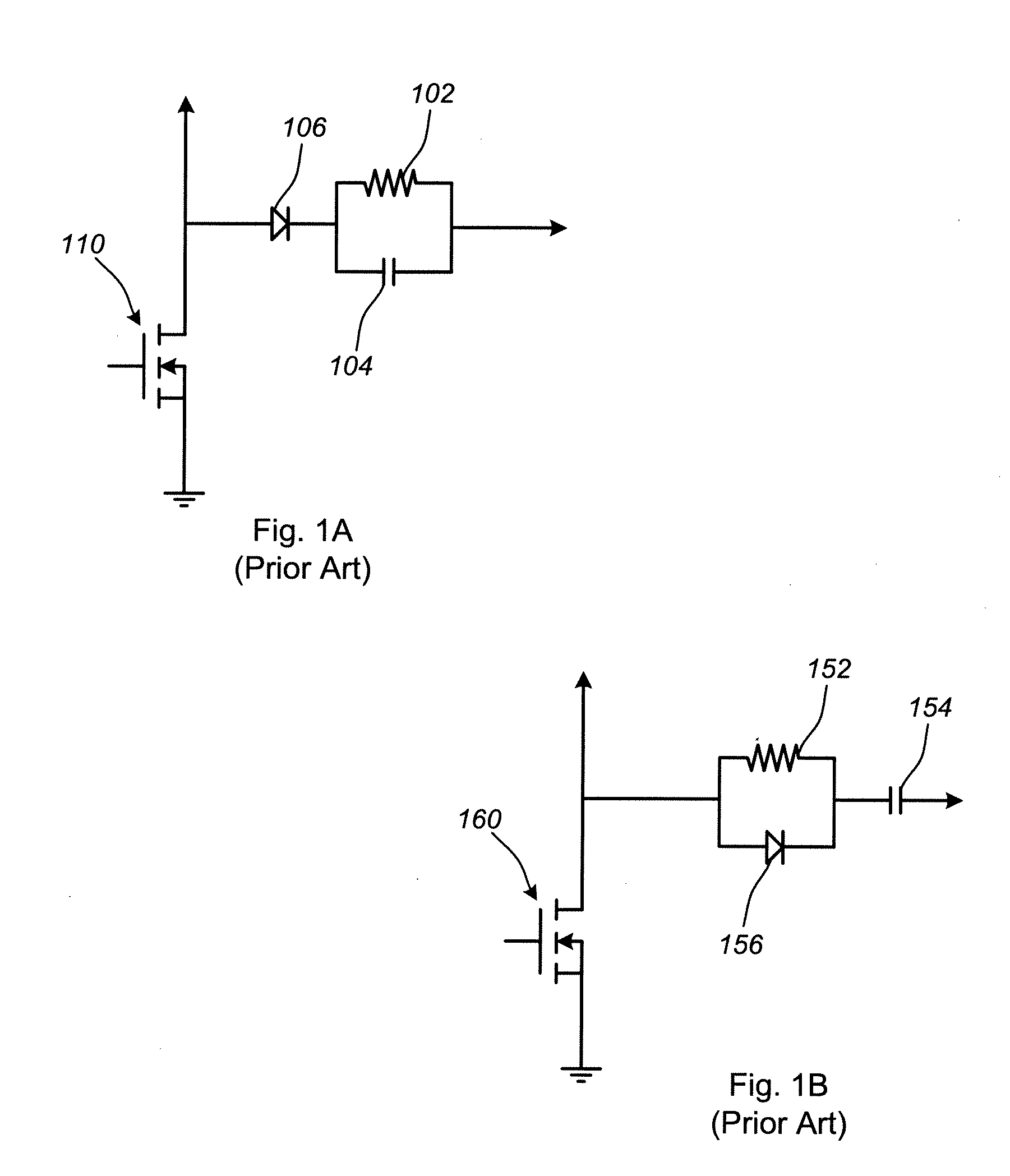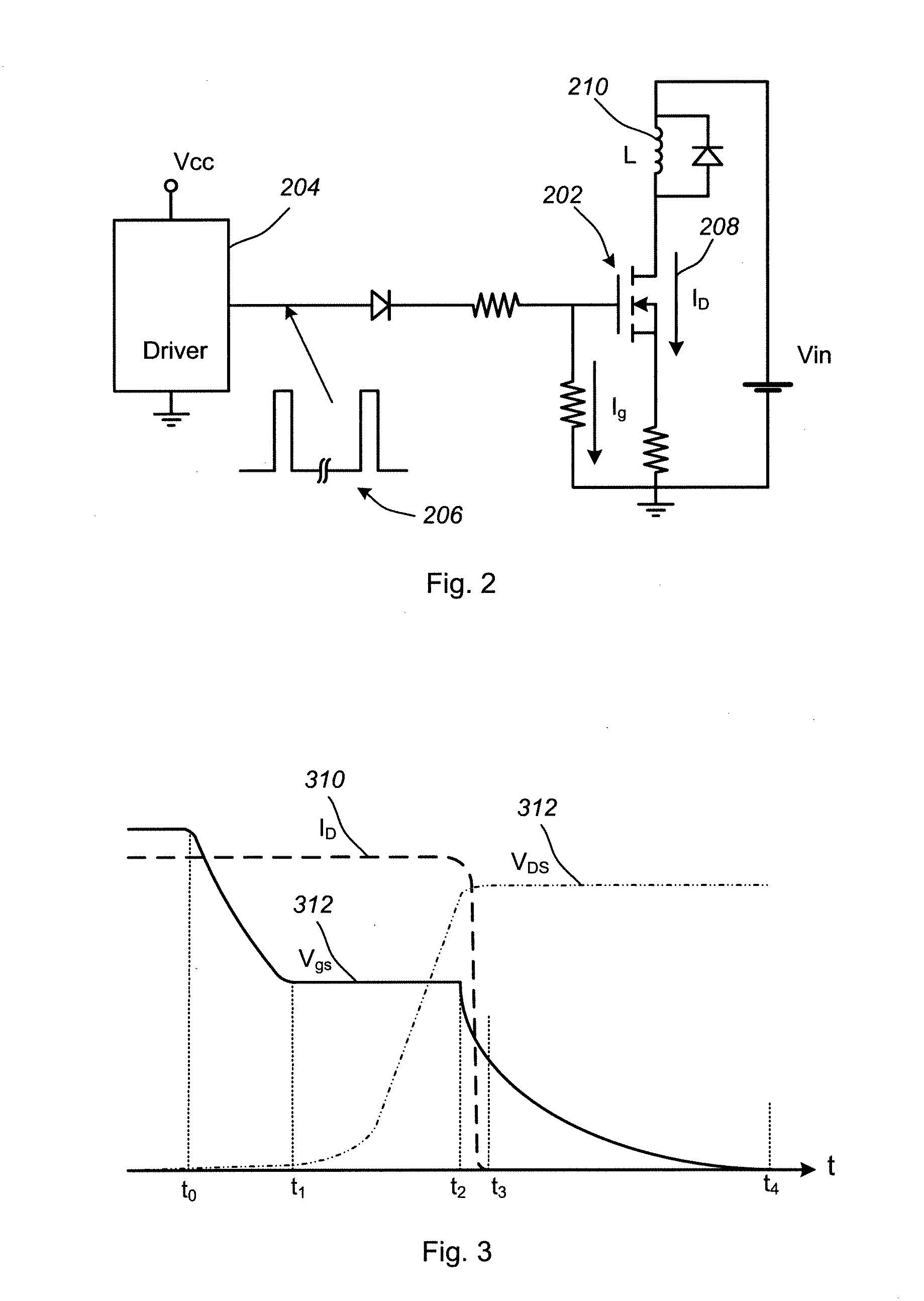Optimal mosfet driver circuit for reducing electromagnetic interference and noise
a driver circuit and electromagnetic interference technology, applied in electronic switching, pulse technique, semiconductor devices, etc., can solve the problems of increasing the power loss of the circuit, reducing the power conversion efficiency, and ringing, so as to reduce the dead time and power consumption, and the effect of reducing the spike of voltage and curren
- Summary
- Abstract
- Description
- Claims
- Application Information
AI Technical Summary
Benefits of technology
Problems solved by technology
Method used
Image
Examples
Embodiment Construction
[0026]An embodiment of present invention controls the turn-off profile of a MOSFET or similar device in order to reduce voltage spikes and electromagnetic interference (EMI) while at the same time limiting power losses and retaining relatively fast switching speeds. For example, the table below compares three simulations of a 30-Volt MOSFET switching circuit. Case one shows a fast turn off of a MOSFET in a circuit with no snubber. Case two shows a slow turn off for a circuit in which a snubber typical of the prior art is used. Case three shows a controlled MOSFET turn off in a circuit in accordance with an embodiment of the present invention.
Case 1Case 2Case 3NoTypicalEmbodiment of thesnubbersnubberpresent inventionSpike (V)51V31V31.5VSwitching power1.61W3.1W2.3Wloss (W)Switching time (ns)22.7ns186ns50ns
[0027]As can be seen from the table above, the use of a snubber can significantly reduce the magnitude of the voltage spike from 51 V to 31 V. However, it also increases the switchin...
PUM
 Login to View More
Login to View More Abstract
Description
Claims
Application Information
 Login to View More
Login to View More - R&D
- Intellectual Property
- Life Sciences
- Materials
- Tech Scout
- Unparalleled Data Quality
- Higher Quality Content
- 60% Fewer Hallucinations
Browse by: Latest US Patents, China's latest patents, Technical Efficacy Thesaurus, Application Domain, Technology Topic, Popular Technical Reports.
© 2025 PatSnap. All rights reserved.Legal|Privacy policy|Modern Slavery Act Transparency Statement|Sitemap|About US| Contact US: help@patsnap.com



